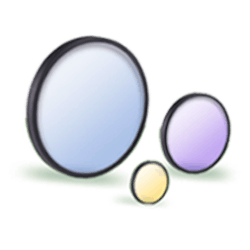[Page 2] Q&A: Optical filter manufacturer expands into the machine vision world
Editor's note: This article is continued from page one.
Square-wave interference passbands transmit less unwanted light and more desired light. Look at a graph of the transmission – it’s all about the area under the curve when calculating both the signal and the noise. But you can’t forget to also look at the Optical Density plot, because that determines how well the filter blocks what you don’t want your camera to detect.
We’ve relaxed the blocking compared with our fluorescence filters, although to achieve the steepness that we think is important, higher blocking is sort of a by-product. More layers in the filter coating can result in both properties at the same time, and also allows for other design considerations, like the increased cone angle acceptance.
Where do you see Chroma in the future of the vision industry?
That’s one of the things that I was hoping to get a better feel for by being at the Vision Show. Regarding the life sciences side of it, although there is plenty of potential common ground between what I think of as machine vision and life science imaging applications, I don’t think that it’s evolved much yet. There’s some overlap, but I think that market is in its early stages.
As an example, we exhibited at AIA’s Vision in Life Sciences meeting in San Diego last November. I saw traditional machine vision applications that just happened to be applied to life science products, such as measuring fill levels in pharmaceutical products, or inspecting test tubes for use in clinical practice. But to me, that’s basic machine vision, and not really life sciences.
And then I saw some really advanced life science imaging that to me didn’t seem like it had much to do with machine vision. I didn’t really notice a lot of overlap. I think that’s because the various industries are just finding out what the other is all about and investigating potential opportunities, just like we were doing.
Then, we were asked to give a talk about using optical filters in the life sciences at the Vision Show, and it seems that there’s already more of a synergy compared with last year.
So I see Chroma continuing to grow in areas where there is overlap, like point-of-care products and surgical instrumentation, and we’ll also continue to serve the scientific, clinical, and diagnostic biomedical markets that we’ve long served.
But I’m hoping that Chroma’s filters will also fill a need for better contrast in more traditional machine vision applications. I also see Chroma satisfying a demand for higher levels of blocking of unwanted light from things like lasers, high powered LEDs, and other very bright light sources that you don’t want your camera to see.
View more information on Chroma.
Share your vision-related news by contacting James Carroll, Senior Web Editor, Vision Systems Design
To receive news like this in your inbox, click here.
Share your comments, tips, or questions in our comments section below.
Page 1 | Page 2
About the Author

James Carroll
Former VSD Editor James Carroll joined the team 2013. Carroll covered machine vision and imaging from numerous angles, including application stories, industry news, market updates, and new products. In addition to writing and editing articles, Carroll managed the Innovators Awards program and webcasts.

